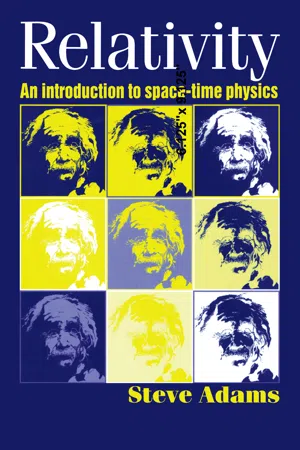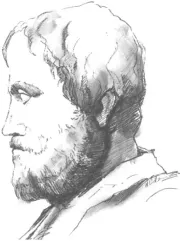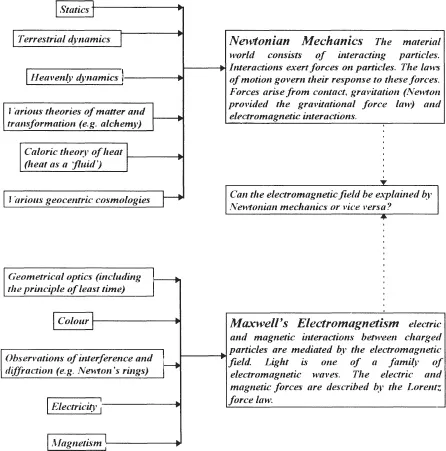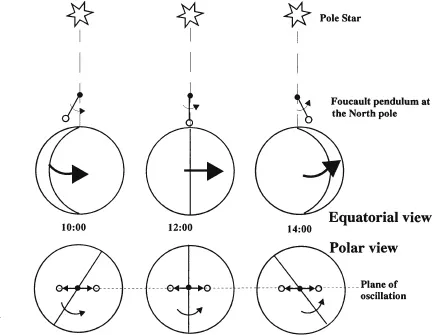
This is a test
- 296 pages
- English
- ePUB (mobile friendly)
- Available on iOS & Android
eBook - ePub
Book details
Book preview
Table of contents
Citations
About This Book
Provides the essential principles and results of special relativity as required by undergraduates. The text uses a geometric interpretation of space-time so that a general theory is seen as a natural extension of the special theory. Although most results are derived from first principles, complex and distracting mathematics is avoided and all mathe
Frequently asked questions
At the moment all of our mobile-responsive ePub books are available to download via the app. Most of our PDFs are also available to download and we're working on making the final remaining ones downloadable now. Learn more here.
Both plans give you full access to the library and all of Perlego’s features. The only differences are the price and subscription period: With the annual plan you’ll save around 30% compared to 12 months on the monthly plan.
We are an online textbook subscription service, where you can get access to an entire online library for less than the price of a single book per month. With over 1 million books across 1000+ topics, we’ve got you covered! Learn more here.
Look out for the read-aloud symbol on your next book to see if you can listen to it. The read-aloud tool reads text aloud for you, highlighting the text as it is being read. You can pause it, speed it up and slow it down. Learn more here.
Yes, you can access Relativity by Steve Adams in PDF and/or ePUB format, as well as other popular books in Physical Sciences & Physics. We have over one million books available in our catalogue for you to explore.
1
CLASSICAL PHYSICS
1.1 WHAT IS CLASSICAL PHYSICS?
1.1.1 A Historical Perspective.
Pre-Classical science was an attempt to understand the world in terms of qualitative models based on the religious and philosophical ideas of the middle ages. Established opinion and tradition had greater authority than empirical evidence. The symbolism of science and superstition overlapped and there was no clear way for science to progress.
Four physicists seem to stand out from the rest: Galileo Galilei (1564–1642) and Isaac Newton (1642–1727) for classical mechanics, and Michael Faraday (1791–1867) and James Clerk Maxwell (1831–1879) for classical electromagnetism, but many others made essential contributions to the evolution of the classical world-view. As Newton said:
‘If I have seen further it is by standing on the shoulders of giants.’
Among these ‘giants’ was Ptolemy who, in the second century AD, explained the observed motion of the heavens by a series of cyclical and epicyclical motions centred on the Earth, and Copernicus who suggested (heretically) that the system might be simplified if the Sun rather than the Earth were at its centre. Kepler developed Copernicus's ideas and suggested elliptical orbits for the planets, supporting his theory with mathematical arguments based on the time periods and average radii of their orbits. It was left to Newton to explain these ideas in terms of a central force (gravitation) originating in the mass of all bodies.
Medieval theories and descriptions of motion (based mainly on the ideas of Aristotle) were challenged by Galileo who clarified the underlying concepts of velocity, acceleration, force and inertia and so cleared the way for Newton's Laws. These were published in the ‘Principia’ (in 1687) which included ‘definitions’ of space and time, the three laws of motion, and the theory of gravitation. Much of what followed for the next two hundred and fifty years, much of what we understand as ‘physics’, derives from the Principia.
One of the consequences of Newton's laws is the fact that certain quantities, for example total energy, are in some circumstances conserved; despite interactions and transformations within a system these quantities do not change. Once Joule and others had established that heat is a form of energy, the law of conservation of energy became one of the most important principles in physics. It is the first law of thermodynamics. (The second law, that the entropy of the universe tends to a maximum, explains why, although the total energy of the universe remains constant, the available energy for useful work is continually diminished. It is in this sense that the world faces an ‘energy crisis’.)

fig 1.1 Aristotle (384–322 BC)
‘If everything that is in motion is being moved by something, how comes it that certain things that are not self moving nevertheless continue with their motion when no longer in contact with the agent that gave them motion?’
Artwork by Nick Adams © 1996
Classical optics made several attempts to explain the nature and properties of light. Huygens (1629–1693) proposed a wave theory as did Hooke (1635–1703) in opposition to Newton's own particle model. In fact it was Newton's authority that delayed the general acceptance of a wave model until the accumulated experimental evidence seemed overwhelming. Grimaldi (1618–1663) reported the diffraction of light in work published posthumously in 1665 but it was a century and a half later that Young (1773–1829) made the crucial measurement of the wavelength of visible light from the interference fringes formed in a double slit experiment. This seemed to prove that light was by nature a wave-like phenomenon. The velocity of light was measured with increasing accuracy by Romer (1644–1710), Fresnel (1788–1827), Foucault (1819–1868) and Michelson (1852–1931) and was found to be about three hundred million metres per second in air. Physicists speculated on the possible nature of the all-pervading medium that might support the rapid oscillations of a light wave and called it the ‘luminiferous ether’.
In the seventeenth century, technological advances (such as the improvement of optical instruments and the development of accurate clocks) together with a greater emphasis on experimental methods, created ideal conditions for the development of a new type of theory - a theory that was both empirical and quantitative. Classical physics was developed between about 1650 and 1900 and is based on idealized mechanical models that can be subjected to mathematical analysis and tested against observation. It provides us with accurate and compelling explanations of matter, motion, gravity, electricity, magnetism and light on scales of magnitude extending from the invisibly small to the unimaginably large.
fig 1.2 By 1900 Classical physics had unified many diverse phenomena

During the same period a vast amount of observational data concerning electricity and magnetism had accumulated. Coulomb (1736–1806) had formulated laws of force for charges and magnetic poles, Oersted (1777–1851) demonstrated the essential link between electricity and magnetism, and Biot (1774–1862), Savart (1791–1841), and Ampère (1775–1836) developed a mathematical theory of the magnetic effects of an electric current. Faraday (1791–1867) discovered electromagnetic induction and introduced the pictorial ‘lines of force’ description of electromagnetic interactions. He also showed that magnetic fields could rotate the plane of polarization of light and so linked optics and electromagnetism for the first time. Maxwell (1831–1879) developed a beautiful mathematical theory of the electromagnetic field (the Maxwell equations). His equations predicted the existence of electromagnetic waves which would travel at three hundred million metres per second in a vacuum - the speed of light - so the Maxwell equations unified electricity, magnetism and optics in an elegant mathematical model. The equations also predicted that radiation would exert a pressure and so can transfer energy and momentum between charged particles. Lorentz (1853–1928) showed how the fields exert forces on charges and Thomson (1856–1940) discovered the electron in 1897. Attempts to ‘complete’ physics by unifying electromagnetism and mechanics by finding either a mechanical basis for electromagnetism (pursued by Maxwell) or an electromagnetic basis for matter (e.g. the Abraham-Lorentz theory of the electron) failed, but eventually led to the crisis in classical physics from which special relativity emerged.
It is important to realize that, ever since Newton invented the differential and integral calculus and demonstrated its awesome power to formulate and solve problems in physics, new and increasingly sophisticated mathematical models were invented and used. Maxwell's electromagnetic equations are an example of this, as are the elegant generalized mechanics of Hamilton (1805–1865) and Lagrange (1736–1813). Often the symmetries of the mathematical models themselves revealed previously unsuspected relationships in physics. It is interesting that Maxwell's equations themselves already contain, in essence, much of special relativity, and Hamiltonian mechanics can be regarded as a ‘template’ for quantum theory.

fig 1.3 Isaac Newton (1642–1727)
‘We are to admit no more causes of natural things than such are both true and sufficient to explain their appearances.’
Artwork by Nick Adams © 1996
By 1900 the classical world-view was established: matter consists of mechanical particles subject to Newton's laws of motion acted upon by gravitational and electromagnetic forces, and visible light is a narrow range of wavelengths within the much broader electromagnetic spectrum.
1.2 NEWTONIAN MECHANICS.
‘The purpose of mechanics is to describe how bodies change their position in space with “time”. ...’
(Einstein, Relativity)
‘The question what is place? presents many difficulties. An examination of all the relevant facts seems to lead to divergent conclusions.’
(Aristotle, Physics Book IV Chapter 1)
1.2.1 Space And Time.
‘Absolute, true and mathematical time, of itself and from its own nature, flows equably without relation to anything external.’
‘Absolute space, in its own nature, without relation to anything external, remains always similar and immovable’
(Newton, Principia)

fig 1.4 Newton's bucket. The left hand bucket is at rest with respect to ‘the distant stars’ and the water surface is horizontal. The right hand bucket rotates with respect to the ‘fixed stars’ and the water surface is concave
Newton's laws operate against a background of absolute space and absolute time. Following the motion of objects in Newton's universe is like plotting the paths of insects on uniform graph paper and timing them all with a single clock. Each particle occupies a particular position at each instant and instants follow one another in a unique sequence agreed by all observers.
In a famous experiment with a bucket of water Newton showed that the surface of the water would only lie flat when it was stationary with respect to the observed heavens. This suggested that absolute space might be identified with the frame of reference of the ‘fixed stars’, an observation apparently confirmed by Foucault's pendulum, which retains its plane of oscillation with respect to these ‘fixed stars’ despite the rotation of the Earth.

fig 1.5 Foucault's pendulum. A pendulum suspended from a perfect pivot above the North pole oscillates in a fixed plane with respect to the distant stars as the Earth rotates beneath it.
Newton was well aware that absolute measures of space and time were inaccessible and emphasized that we can only make relative measurements by comparison against chosen standards. For example, the standard unit of length might be that of a certain rod, whilst the unit of time might be related to an apparently regular periodic motion (perhaps the Earth's rotation on its axis). The choice of standards then and now is arbitrary, but it is guided by the need to relate physical change to phenomena which generate simple descriptions and reveal the regularities of nature. In other words the physicist chooses standards likely to lead to the most economical model of the physical world whilst at the same time yielding values which can be accurately reproduced in laboratory situations. In the Newtonian world standard rods have an absolute length and all similar clocks remain synchronized regardless of position or motion.
There are few pieces of evidence more beautiful and compelling than photographs of star trails above the Earth's poles. These photographs are taken with a stationary camera whose aperture is held open for several hours. The rotation of the Earth carries the camera with it and each star inscribes an arc of a circle on the film. It is very easy to agree that the Earth is rotating and the vast bulk of matter in the visible universe defines a stationary background, an absolute reference frame for any motion in space.

fig 1.6 Star trails around the South Pole.
Copyright © The Royal Observatory Edinburgh.
The position of a particle in three dimensional space can be given by three numbers. Cartesian coordinates give the position relative to an a...
Table of contents
- Front Cover
- Half Title
- Dedication
- Title Page
- Copyright
- CONTENTS
- 1. CLASSICAL PHYSICS
- 2. PROBLEMS WITH SPACE AND TIME
- 3. SPACETIME
- 4. GENERAL RELATIVITY AND COSMOLOGY
- 5. APPENDIX
- Further Reading
- Index